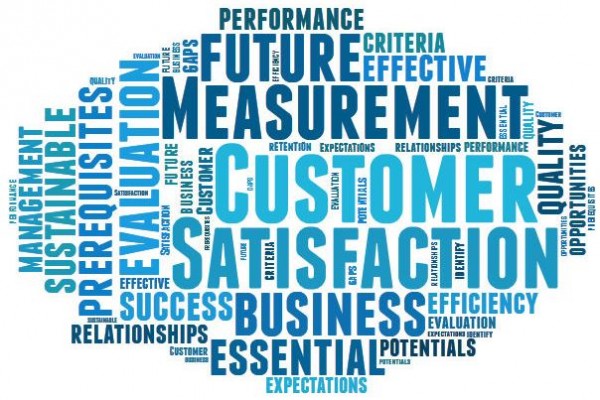Voice of Customer – Do you speak “customerese”? - Part II Customer Satisfaction
15/12/2014
The measurement of customer expectations and customer satisfaction is an essential prerequisite for targeted quality management. In our periodically published series, “Voice of Customer”, we will provide an overview of the most important methodological aspects.Part II: Customer Satisfaction
The measurement and evaluation of customer satisfaction are essential prerequisites for sustainable future corporate success and effective quality management according to the German industry standard DIN EN ISO 9001: 2008. They enable the assessment of a company’s performance and efficiency at various interfaces and with respect to various criteria. On this basis, companies can strengthen their current business relationships and identify potentials for further customer retention and future business opportunities.Satisfaction can be measured as a degree of fulfillment of expectations. According to standard psychological models, customer satisfaction emerges from the matching of previous and ongoing personal experiences of the customer and his expectations towards the company. The main focus of the company should be on fulfilling customer expectations over a wide range of relevant criteria. Thus, active quality management is about analyzing the balance between expectations and actual experiences for specific performance criteria and deriving concrete measures for existing gaps. To sum it up: satisfaction only occurs when a match is achieved between expectations and experiences. While gaps lead to dissatisfaction, over-fulfillment can generate enthusiasm and customer retention on an emotional level.In order to meet the customer’s articulated requirements and to ensure effective quality management, it is necessary to establish a systematic process of satisfaction measurement and derivation of subsequent measures. This measurement can be implemented in various ways. One can analyze existing data in a direct fashion and rather inexpensively through, e.g., complaint management. An indirect evaluation can be achieved via the self-assessment of company employees. However, the key instrument and ideal approach is and remains the customer survey.Surveys provide an outside view on the company’s performance. They capture criticism, needs and expectations of a representative population of customers on a highly detailed level revealing trends and changes.Event driven surveys explore specific positive and negative customer experiences, usually relating to trigger events in the recent past. However, in regard to reliability and comparability of the data, feature oriented surveys are more appropriate. They allow for an evaluation of interfaces between customer and company, such as product quality, logistics, service services, communication, and price-performance ratio. These interfaces are evaluated using specific performance criteria, which assess the fulfillment of customer expectations based on real experiences. To gain actual relevance for action from the measurement, it is crucial to select key criteria: on the one hand, they need to cover typical conditions and requirements of the respective industry or product segments, on the other hand, they need to capture the customers’ horizons of experience and their relevant interactions with the company.Certain requirements must be met by the interviewee sample as well. Substantial differences between industry segments should be taken into account to reflect the customer structure regarding the decision-making process involved in supplier selection and with respect to specific requirements towards suppliers. For example, when it comes to expectations for logistics services or development cycles, automotive suppliers are faced with very different conditions compared to suppliers in the construction or extractive industries. In order to cover all aspects that can influence the future business relationship in B2B, it is often necessary to interview multiple contacts in various functions within a customer company.Customer evaluations are usually collected using rating scales or Likert scales. We advise using a scale anchored in qualitative statements instead of a purely numerical scale, which assigns a concrete quality statement to each scale point. In the method toolbox of Schlegel und Partner, for example, we use a scale directly related to the degree of fulfillment of customer expectations (see Figure 1). This design increases the inter-individual comparability of the data and reduces distortions by cultural influences in international customer satisfaction analyses.
Furthermore, back reference of the results to the semantics underlying the used scale allows a precise conclusion as to whether customer expectations are met or improvements are needed.The systematical and methodologically sound measurement of customer satisfaction is the first step to securing and strengthening existing business relationships with a long-term perspective. In the second step, it is crucial to come to a well-founded interpretation of the results and to derive appropriate measures. Next to basic satisfaction scores, advanced analysis tools and approaches should be considered, such as importance rankings, competitor comparisons, development over time and internal as well as external benchmarks.In the next article in this series, we will discuss methods of interpreting results of customer satisfaction analyses and assessing their relevance for action for individual performance aspects at various levels of detail.
Would you like to find out more? Please contact us.
Furthermore, back reference of the results to the semantics underlying the used scale allows a precise conclusion as to whether customer expectations are met or improvements are needed.The systematical and methodologically sound measurement of customer satisfaction is the first step to securing and strengthening existing business relationships with a long-term perspective. In the second step, it is crucial to come to a well-founded interpretation of the results and to derive appropriate measures. Next to basic satisfaction scores, advanced analysis tools and approaches should be considered, such as importance rankings, competitor comparisons, development over time and internal as well as external benchmarks.In the next article in this series, we will discuss methods of interpreting results of customer satisfaction analyses and assessing their relevance for action for individual performance aspects at various levels of detail.
Would you like to find out more? Please contact us.